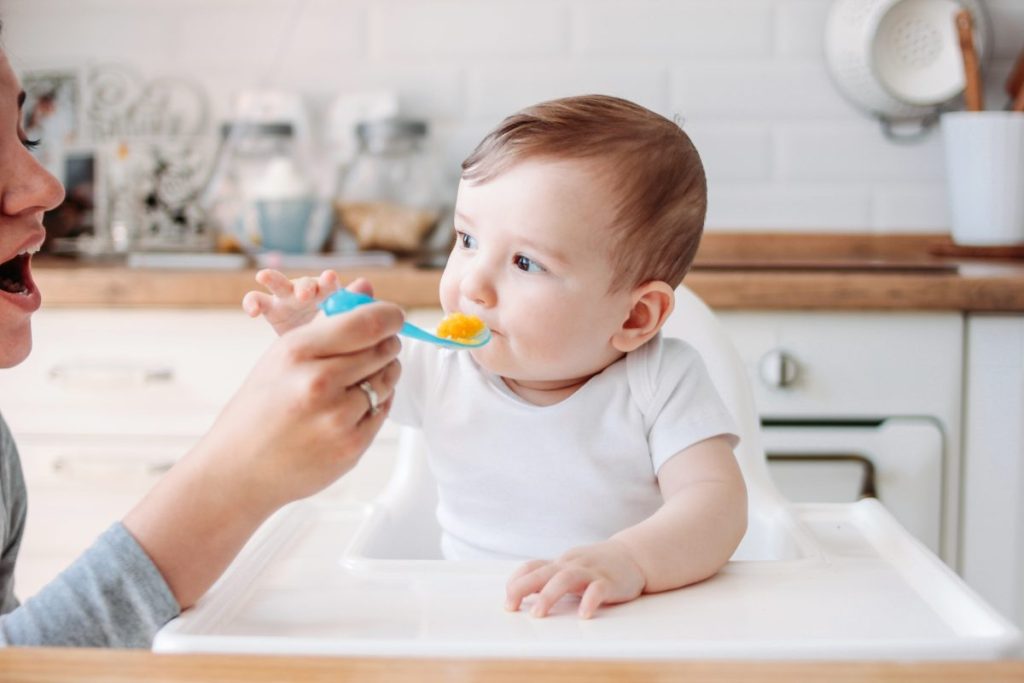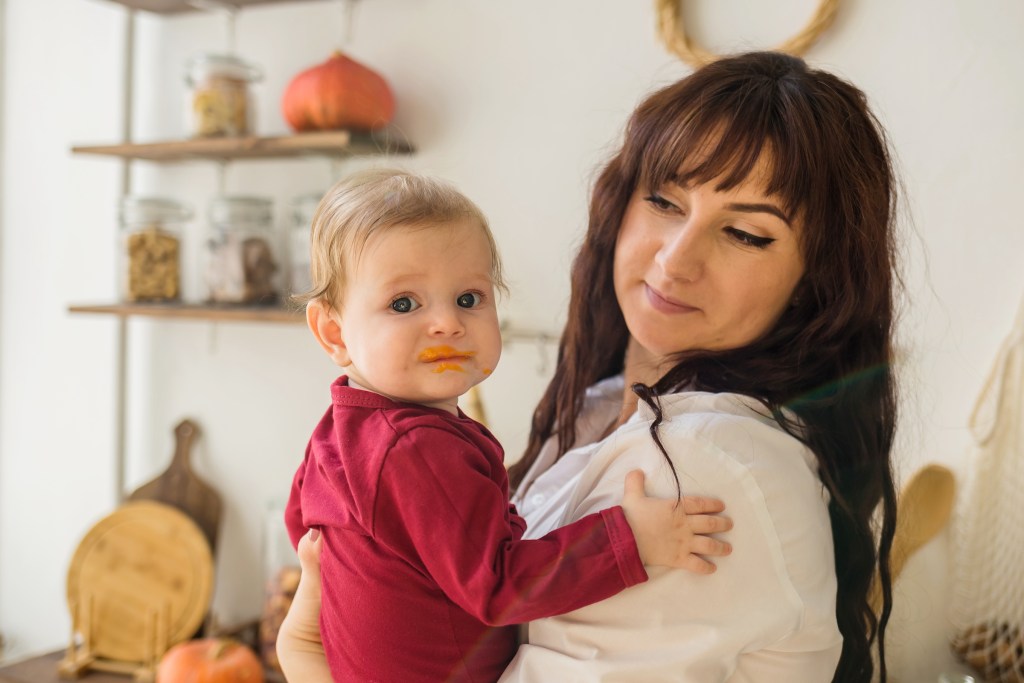Even if you don’t regularly make your own homemade baby food, when it’s fall time and everyone’s enjoying pumpkin spiced-this and pumpkin spice-that, you may feel inspired to whip up something pumpkin for your baby, too. But if your baby’s too young for your favorite pumpkin bread recipe, you’re going to need to start with something a little more palatable, like pumpkin baby food. It sounds delicious but might create some apprehension over how to how to puree the pumpkin in the best possible ways for your baby.
Essentially pumpkin-based baby food, a pumpkin puree is easy to make and comes together in just three easy steps. We’re breaking them all down for you, so you can make your own as soon as today.

Step 1: Make sure your baby is ready for pumpkin (and the pumpkin’s ready for your baby!)
The first step in making pumpkin baby food? Pairing up the right baby with the right pumpkin! You don’t want to go feeding just any grocery store gourd to your beloved baby.
Infants are usually ready for pumpkin at around 6 months of age, or whenever they start chowing down on other pureed and mostly solid foods on a regular basis. However, if you have any doubts about feeding your baby their first pumpkin dish, check in with your pediatrician.
Of course, you want to choose the best pumpkin for your baby’s consumption, too. Look for pumpkins in the grocery store that are grown and sold for eating — not carving. These pumpkins should have a sticker on them that says something along the lines of “pie pumpkin.” These are usually small and found around the produce area.
Step 2: Cook the pumpkin
Before you can puree the pumpkin for your baby, you have to cook it. You can easily bake your baby’s pumpkin in the oven.
Using a sturdy, large kitchen knife, cut off the pumpkin’s stem and slice the pumpkin body in half, like you would any squash you were planning to bake around the fall season, such as acorn squash or butternut squash (or even a spaghetti squash). Once halved, use a sturdy spoon (like an ice cream scoop) to scrape out all the pumpkin “goop,” like the strings and seeds.
Once the pumpkin is clean, place the pumpkin halves face-down on a lined baking sheet and then bake them at 400 degrees Fahrenheit for up to 45 minutes. If you can take a fork and easily jab the pumpkin, with the fork tongs going through the pumpkin skin, you’re good.
From there, allow the pumpkin to cool. If you don’t plan on pureeing it right away, you can always toss it in the fridge for a day or two.
Step 3: Make your puree
Once your cooked pumpkin is completely cool, it’s time to make your puree.
Not sure how to puree pumpkin? Just scrape the cooked pumpkin out of the rind and toss it into your favorite food processor or blender. If you don’t have any equipment like this, you can always use a hand blender or mixer, or even a fork if you’re thorough.
Once your puree is as soft as you want (a few lumps are no big deal, if your baby is accustomed to eating foods with a bit of lumpiness and they know how to gum them), you can feed some to your baby. You always want to introduce a new food into your baby’s diet gradually, so you can watch for any adverse reactions. If you’ve given them the plain pumpkin puree and it’s been a few days, and nothing bad has happened (eg: an allergic reaction), you can then flavor the puree to make it a bit more appealing and, honestly, fun.
Add some of the same spices you enjoy in your own pumpkin dishes, such as small amounts of cinnamon or nutmeg. You can also incorporate the pumpkin puree into your baby’s other foods, such as other vegetable or fruit purees, or meat-based purees.

Add a little fall fun to your baby’s diet
However you serve your new pumpkin puree to your baby, they’ll benefit from pumpkin’s nutrients and health benefits, including fiber, potassium, and Vitamin A. One of the best parts? If you puree up some pumpkin for your baby, you’ll have it on hand for your own use, too, whether you need some for a baking project or just to eat plain (it’s pretty good with some yogurt in the morning).
Need more tips and tricks for making homemade baby food? Check out our article on five creative ways to make baby food at home.


